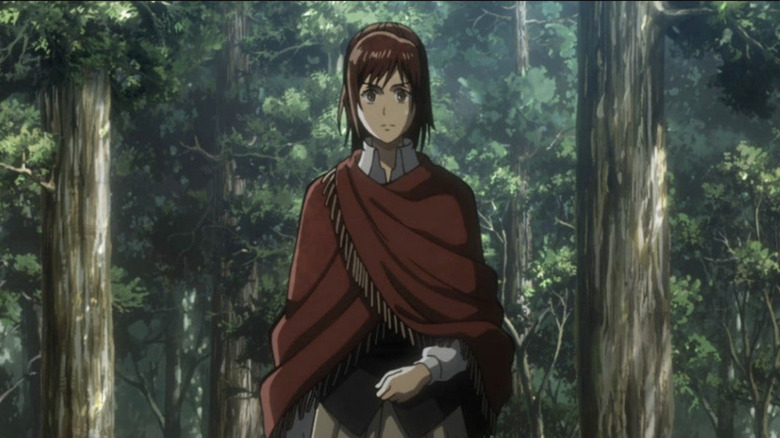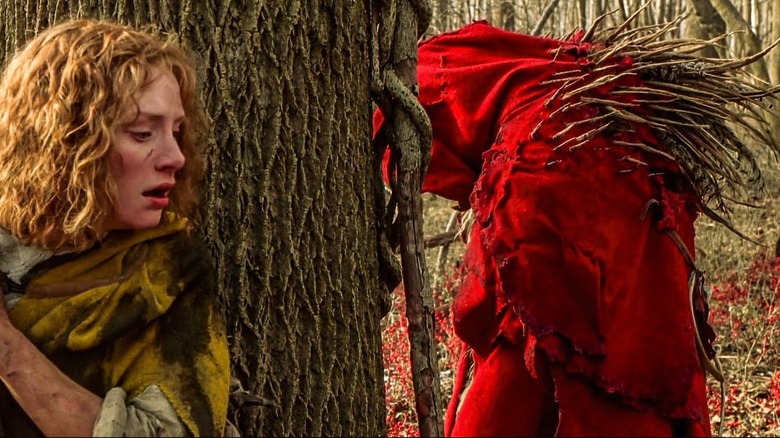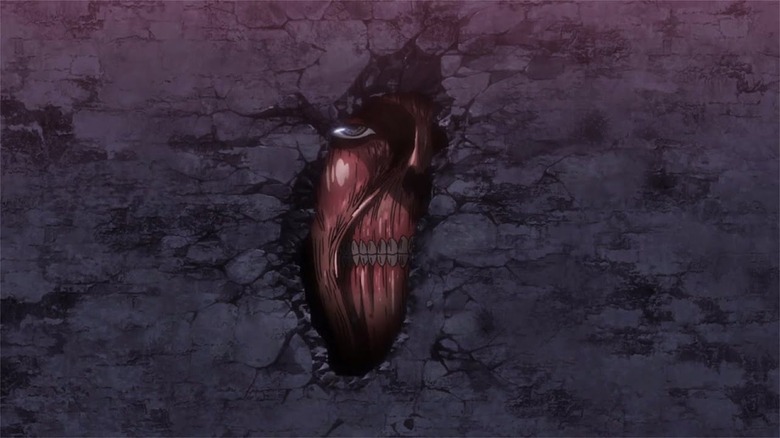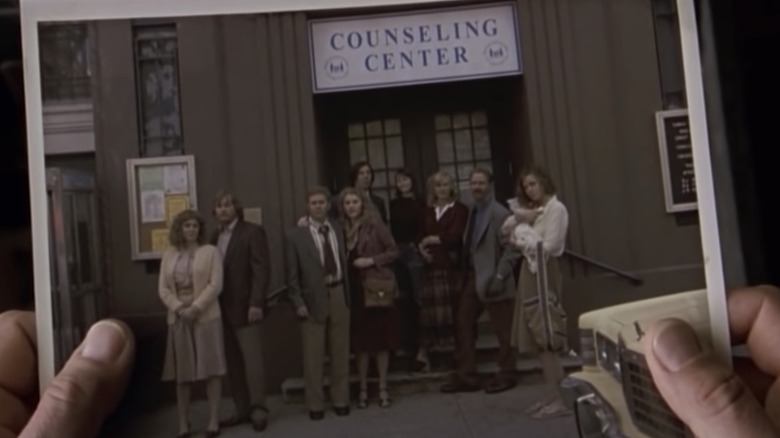Attack On Titan Was Inspired By M. Night Shyamalan's The Village
Have you ever read something where everything clicks into place so neatly, you're angry at yourself for not realizing it? That's how I felt when I read Hajime Isayama, creator of "Attack on Titan," revealed that one of his influences for the manga was M. Night Shyamalan's "The Village."
Picture this: a small settlement of humans lives in isolation. Surrounding them are monsters, thus they dare not venture into the outside world. However, some youths desire to know more about the world and venture outside. On their adventure, it turns out the world is different from what they've been told and their elders have kept secrets. Am I talking about "The Village" or "Attack on Titan?" Trick question, because this works as a barebones summary for both.
Isayama has frequently cited American pop culture in general as an influence on his work. He mentioned "The Village" during an interview with Bessatsu Shōnen Magazine, where "Attack on Titan" was published; also in attendance was "Fullmetal Alchemist" creator Hiromu Arakawa. The interview ran in the magazine's July 2021 issue, mere months after Isayama's manga wrapped that prior April.
While "Attack on Titan" and "The Village" begin with similar frameworks, how do the stories compare if we dive into the details?
Surrounded by monsters
"The Village" is set in Covington, a small, rural community right out of the 19th century. In the woods surrounding the village are territorial monsters: "Those We Don't Speak Of." Lucius Hunt (Joaquin Phoenix) desires to see the towns beyond his village, but after an incursion in the village follows him exploring the woods, he's deterred from venturing further. When Lucius is stabbed in an altercation, his blind fiancée Ivy Walker (Bryce Dallas Howard) must journey through the woods to get him medicine.
Infamously, "The Village" isn't as scary or fantastical as one would expect from its premise. It's been cited as a victim of poor marketing; the trailer plays up the terror and the hidden threat of the monsters. In reality, the movie is more of a ponderous period drama — minus, it turns out, the period. At the end of Ivy's trek, the audience learns that Covington is actually in the middle of a nature reserve.
The village elders became disillusioned with the modern world and founded the settlement to escape it. To keep their oblivious children there, they invented the myth of the creatures in the woods. They still keep fragments of their old lives, though. A keystone of the reveal is when Ivy's father Edward (William Hurt) looks at a modern, color photo of Covington's founders outside the grief counseling center where they all met.
In the end, Ivy returns to the village none the wiser, thanks to her blindness. The Elders, unmoored from their beliefs, decide to keep up the illusion.
Secrets, secrets, more secrets
"Attack on Titan" introduces itself as a post-apocalyptic story. Man-eating giants named "Titans" appeared out of nowhere a century ago and forced humanity into cities surrounded by three layered walls: Rose, Sina, and Maria. It's not immediately clear from the outset if "Attack on Titan" is meant to take place in a version of the real world. The names and architecture are all German, but the technology level is mostly pre-industrial. Like Lucius before him, Eren wants to see the world beyond his village of Shiganshina.
One major difference between "The Village" and "Attack on Titan" is that in the latter, the monsters are very, very real. "Attack on Titan" begins with the Titans breaching the Wall and invading Shiganshina. The pure terror of the invasion is a fantastic hook. In yet another similarity, though, the Titans were originally human; Eren himself can actually turn into one. The walls surrounding the cities? They conceal rows of Titans too.
Picturing the truth
The similarities to "The Village" grow exponentially in "Attack on Titan" chapter 85 (episode 56 of the anime). For the whole series, Eren has kept a key to his family's cellar, given to him by his father Grisha. Eren is determined to find out what's hidden in there and after he and his friends retake Shiganshina, they head to the cellar.
In there, they discover that the world outside their Walls isn't overrun by Titans. Civilization has been rolling on fine; Grisha came from one of those other countries, Marley. The main characters belong to a race called Eldians, who can transform into Titans. Eldians once ruled the world with their power and in modern times are hated for that history. Marley's technology is closer to the 1940s than the 21st century, but it still makes for a striking contrast with the world we've seen up to this point — just like the colonial stylings of Covington contrast with the flashbacks to the elders' youth in 1970s America.
The leadership of humanity inside the Walls knew the true history of the "Attack on Titan" world. The royal family's ancestor, King Karl Fritz, erased his people's memories after the walls were constructed and crafted the false history of mankind's extinction. His descendants have carried the truth, and Fritz's vow of pacifism, ever since. The final kicker? In "Attack on Titan," Eren and co. discover the truth via a photograph of Grisha kept in a lockbox.
Similar settings, twists that uproot those settings, and themes of authority controlling information for "the greater good" are both present in these tales. As it turns out, the similarities between "The Village" and "Attack on Titan" just grow the more they are compared.



